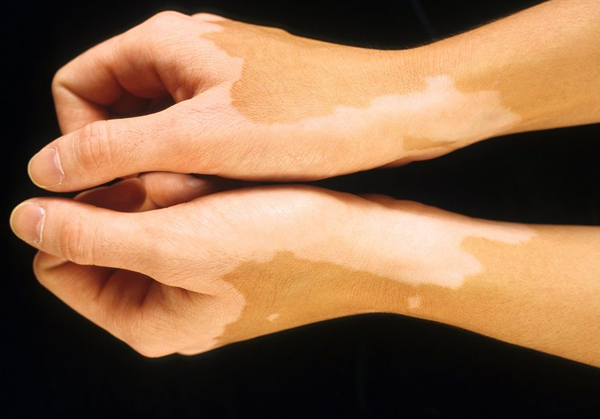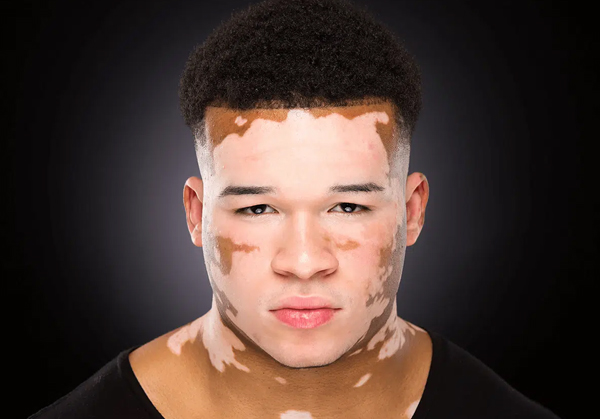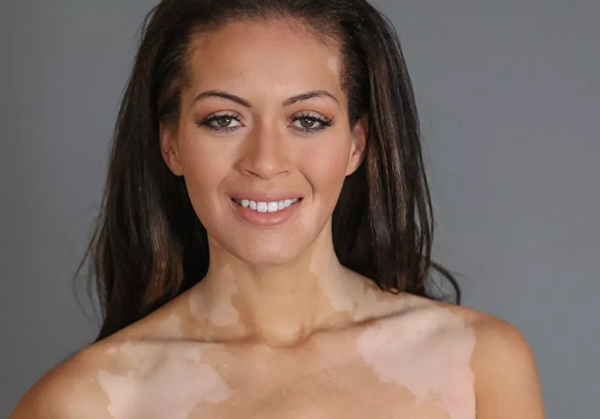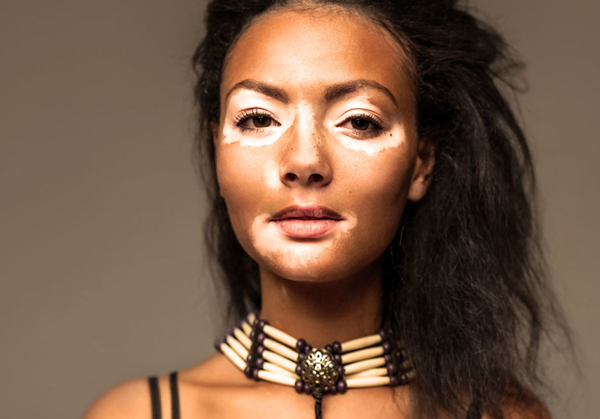Non-Segmental (Generalized) Vitiligo
It involves the presence of symmetrical white patches on both sides of the body.
Vitiligo itself is not harmful or contagious, it can have emotional and psychological impacts on individuals due to changes in appearance. Treatment options for vitiligo aim to restore pigmentation, strengthening immune system and promoting growth of healthy melanocytes.
Vitiligo is a skin condition that causes the loss of pigmentation, leading to white patches on the skin. It occurs when the cells responsible for producing melanin, the pigment that gives color to our skin, hair, and eyes, are damaged or destroyed. As a result, the affected areas of the skin lose their natural color and become lighter or completely white. Vitiligo can appear anywhere on the body and affect people of all skin types, races, and ages.
It involves the presence of symmetrical white patches on both sides of the body.


This type of vitiligo is characterized by the presence of white patches on one side of the body, it generally occurs at a younger age.
This rare form of vitiligo form, depigmentation affects almost the entire body.


This type of vitiligo, features both non-segmental (Generalized) and segmental vitiligo are observed in the same individual.
Vitiligo can occur at any age that starts from usually a single patch which on later stages spreads to complete body. Vitiligo occurs when pigment-producing cells (melanocytes) die or stop producing melanin — the pigment that gives your skin, hair and eyes color. The involved patches of skin become lighter or white. Stages of vitiligo can be defined as:
Focal: Skin patches remain in a small area of the body without spreading in the first two years.
Trichome: Skin patches contain a white mixed with lighter hypopigmented patches.
Universal: Pigment loss across whole body.
Genetic Factors: Sometimes, vitiligo can run in families. If your close relatives have it, you might be more likely to develop it too.
Autoimmune Response: Your body's defense system can mistakenly attack and destroy the melanocytes, the cells responsible for skin color, leading to vitiligo.
Neurological Factors: Nerves play a role. Changes in the nervous system might contribute to the onset of vitiligo.
Oxidative Stress: This happens when there's an imbalance of harmful molecules called free radicals. It can damage cells, including melanocytes, triggering vitiligo.
Viral Triggers: Certain viruses may be linked to the development of vitiligo. Infections can sometimes set off the condition.
Hormonal Changes: Changes in hormones, especially those related to the thyroid, might influence the onset of vitiligo.
Environmental Factors: Excessive sun exposure, certain chemicals, or even emotional stress can be environmental factors that could contribute to vitiligo.
Inflammatory Responses: Inflammation in the body could be linked to vitiligo. When the immune system is activated, it might mistakenly attack melanocytes.
Loss of Skin Color: Vitiligo causes patches of skin to lose their natural color, turning white or lighter than the surrounding skin.
Irregular Shape of Patches: The depigmented areas often have irregular shapes and borders, making them stand out from the normal skin.
Symmetrical Patterns: Vitiligo commonly affects both sides of the body symmetrically, meaning if a patch appears on one side, a similar patch may develop on the other side.
Common Areas Affected: The condition often appears on body parts exposed to the sun, such as the face, hands, arms, and feet. However, it can also occur in other areas.
Hair Color Changes: In some cases, the hair located in the affected skin patches may also lose its natural color and turn white.
Early Age Onset: Vitiligo can start at any age, but it often begins before the age of 20. It can progress slowly or rapidly.
No Pain or Discomfort: Vitiligo itself doesn't cause physical pain or discomfort. It is mainly a cosmetic concern, affecting the appearance of the skin.
Association with Other Conditions: Vitiligo is sometimes associated with other autoimmune conditions, where the immune system mistakenly attacks the body's own cells, including the pigment-producing cells in the skin.
At SRIAAS, we pride ourselves on offering a superior Ayurvedic treatment for VITILIGO, a condition that has become increasingly prevalent in today's world. Our approach is rooted in the ancient wisdom of Ayurveda, which emphasizes the balance of the body's energy for overall well-being. We understand that each individual is unique, and so are the underlying causes of VITILIGO. Our expert Ayurvedic practitioners carefully assess your specific condition and tailor a treatment plan that addresses the root causes.
SRIAAS treatment for VITILIGO involves a combination of herbal formulations, dietary guidance, and lifestyle modifications. Our proprietary Ayurvedic medicines are crafted from natural ingredients known for their immuno-modulating properties, aiding in the rejuvenation of healthy skin cells and promotes restoration of skin pigment. Unlike conventional treatments that often focus solely on symptoms, SRIAAS takes a comprehensive approach to promote long-term skin health.
No, vitiligo is not contagious. It is not caused by bacteria, viruses, or any form of direct contact. It is believed to be an autoimmune disorder.
Vitiligo affects people of all ages, It can begin at any age but generally starts before the age of 20. Also, men, women, and children are equally affected.
Sun exposure can trigger or exacerbate vitiligo, especially in areas that are prone to sunburn. However, early morning sunlight is good for vitiligo patients.
Vitiligo can also affect other areas, such as the mucous membranes ( inside the mouth and nose), hair, and eyes.
At SRIAAS, we provide Ayurvedic treatments and personalized diet plan to manage and improve the appearance of the skin.